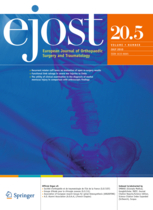
Arthroplasty
Heel vibration and rest with CPM may reduce risk of flexion contracture following TKA
Eur J Orthop Surg Traumatol. 2015 Jan;25(1):167-72.144 patients scheduled for total knee arthroplasty were randomized to receive continuous passive motion therapy either with or without a novel heel vibration and rest treatment device. This was done to determine whether heel vibration and rest devices help reduce the incidence of flexion contracture in the short-term following total knee arthroplasty. Lateral X-rays, along with computer-based methods, were used to measure the main outcome. Results indicated that there were significantly more patients in the combination therapy group that attained full knee extension, and therefore fewer patients who experienced flexion contracture.
Unlock the full article
Get unlimited access to OrthoEvidence with a free trial
Start TrialCritical appraisals of the latest, high-impact randomized controlled trials and systematic reviews in orthopaedics
Access to OrthoEvidence podcast content, including collaborations with the Journal of Bone and Joint Surgery, interviews with internationally recognized surgeons, and roundtable discussions on orthopaedic news and topics
Subscription to The Pulse, a twice-weekly evidence-based newsletter designed to help you make better clinical decisions
Exclusive access to original content articles, including in-house systematic reviews, and articles on health research methods and hot orthopaedic topics
Or continue reading this full article
Register Now

Subscribe to "The Pulse"
Evidence-Based Orthopaedics direct to your inbox.




































